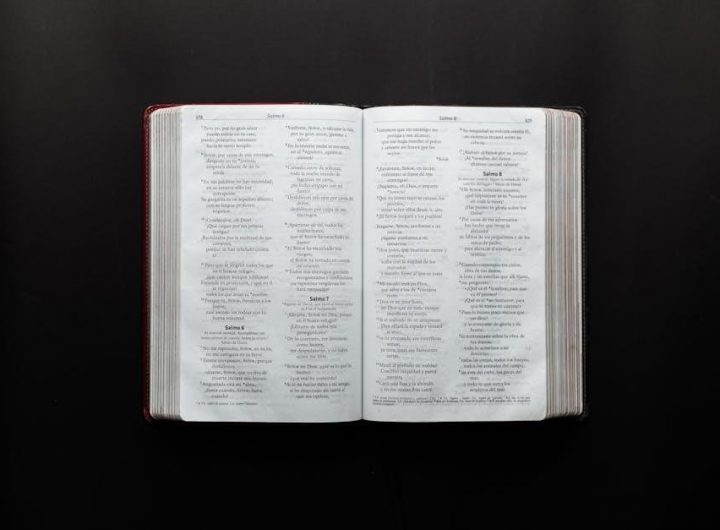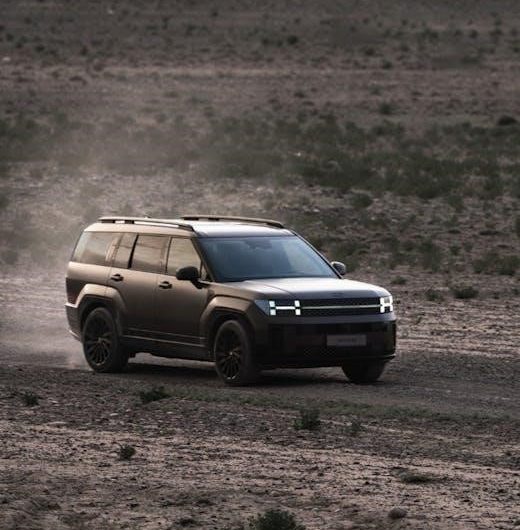Dassault Rafale⁚ An Overview
The Dassault Rafale is a twin-engine, multirole combat aircraft, designed and built by Dassault Aviation. Its omnirole capabilities allow it to perform diverse missions, from air superiority to ground strikes. It’s deployed by several nations globally.
Rafale Variants and Operational Capabilities
The Dassault Rafale boasts a family of variants tailored for diverse operational needs. The Rafale C is a single-seater land-based variant, while the Rafale M is optimized for carrier operations, demonstrating impressive adaptability. Complementing these is the Rafale B, a two-seater also operating from land bases. Each variant shares a common airframe and mission system, maximizing efficiency and reducing logistical complexities. This standardization ensures seamless integration and simplifies maintenance procedures across the fleet, enhancing overall operational readiness. The Rafale’s operational capabilities encompass a wide spectrum of air combat roles, including air superiority, air defense, close air support, deep strikes, reconnaissance, anti-ship strikes, and nuclear deterrence missions, cementing its reputation as a true multirole platform.
Rafale’s Omnirole Capabilities⁚ Air Superiority to Ground Strikes
The Rafale’s versatility is a defining characteristic. Its omnirole design allows it to seamlessly transition between diverse mission profiles. In the realm of air superiority, the Rafale excels, employing advanced sensors and weaponry to dominate the skies. Simultaneously, its precision-guided munitions and robust targeting systems make it exceptionally effective in ground attack roles, delivering devastating strikes against enemy infrastructure and personnel. This adaptable nature allows the Rafale to perform close air support, providing crucial protection for ground troops. Furthermore, it excels in reconnaissance missions, gathering critical intelligence using its advanced sensors, and executing anti-ship strikes with accuracy and effectiveness. Its ability to swiftly adapt to evolving battlefield situations is a testament to its design philosophy and advanced technological integration. This adaptability makes the Rafale a highly sought-after asset in modern warfare.
Technical Specifications of the Rafale
This section details the Rafale’s key technical aspects, encompassing engine performance, dimensions, weight, and comprehensive armament capabilities.
Engine and Performance Data⁚ M88 Turbofan and Top Speed
The Rafale’s power comes from a pair of Snecma M88 turbofan engines, each boasting impressive thrust capabilities. These advanced engines are critical to the aircraft’s exceptional performance characteristics, enabling it to achieve remarkable speeds and maneuverability. The M88’s sophisticated design incorporates cutting-edge technology, contributing to the Rafale’s overall effectiveness. Specific dry thrust and afterburner thrust figures are readily available in detailed technical specifications. The Rafale’s top speed is often cited as approximately Mach 1.8, though this can vary depending on factors like payload and altitude. This impressive speed, combined with its agile handling, makes the Rafale a formidable adversary in air combat scenarios. Furthermore, the engine’s design incorporates features that contribute to ease of maintenance and operational reliability, minimizing downtime and maximizing operational readiness.
Dimensions and Weight⁚ Length, Wingspan, and Empty/Loaded Weight
The Dassault Rafale’s physical dimensions are carefully engineered for optimal performance and operational flexibility. Its length, typically around 15 meters, contributes to its aerodynamic efficiency. The wingspan, usually around 11 meters, provides sufficient lift for various flight conditions and maneuvers. The height, generally around 5 meters, is compact enough for carrier operations and land-based deployments. These dimensions, along with its weight, significantly influence its overall maneuverability and performance characteristics. The empty weight of the Rafale varies depending on the specific variant (C, M, or B), typically ranging from approximately 9,850 kilograms to 10,600 kilograms. The loaded weight, however, is substantially higher, reaching up to 24,000 kilograms, reflecting its considerable payload capacity. This weight variation is a crucial factor affecting its operational range and fuel efficiency. Precise figures can be found in detailed technical specifications.
Armament and Payload Capacity⁚ Weapons Systems and Range
The Rafale boasts a formidable array of weaponry and a substantial payload capacity, enabling it to engage a wide spectrum of targets effectively. Its extensive arsenal includes air-to-air missiles like the Mica and MICA-IR, providing superior air-to-air combat capabilities. For ground attack missions, it carries a diverse selection of precision-guided munitions, such as the SCALP EG cruise missile and various laser-guided bombs. Its anti-ship capabilities are further enhanced by the inclusion of the AM39 Exocet missile. The Rafale’s impressive payload capacity allows it to carry a significant number of these weapons simultaneously, extending its operational effectiveness and range. The precise number of weapons and their range vary depending on the specific mission profile and configuration. Detailed specifications regarding the types and quantities of armaments carried, as well as their individual ranges, can be found in detailed technical specifications and manuals. This adaptable armament system allows for mission tailoring to various scenarios.
Rafale in the Global Aerospace Industry
The Rafale holds a significant position in the global fighter jet market, competing with other advanced aircraft. Its international sales demonstrate its appeal and technological capabilities to various air forces worldwide.
Rafale’s Place in the 4.5th Generation Fighter Jet Market
The Dassault Rafale occupies a prominent position within the competitive landscape of 4.5th generation fighter jets. Its blend of advanced technologies and proven combat capabilities positions it as a strong contender against other leading platforms in this class. Key features contributing to its market presence include its multirole versatility, enabling it to effectively execute a broad spectrum of missions, from air superiority to precision ground strikes. The Rafale’s sophisticated avionics suite, incorporating cutting-edge sensors and targeting systems, enhances its situational awareness and targeting accuracy, making it a highly effective platform in modern warfare scenarios. Furthermore, the Rafale’s robust airframe design and reliable engine performance contribute to its overall operational effectiveness and maintainability. The aircraft’s proven track record in various combat deployments has also strengthened its reputation and appeal among potential customers. These factors combined solidify the Rafale’s status as a leading contender within the 4.5th generation fighter jet market.
International Sales and Acquisitions⁚ India, Qatar, and Others
The Dassault Rafale’s international success is evident in its sales and acquisitions by various nations. A significant deal involved the Indian Air Force procuring 36 Rafale fighter jets, marking a substantial investment in enhancing their aerial capabilities. This acquisition underscores the Rafale’s appeal to major global air forces. Another notable example is the purchase of Rafale jets by the Qatari Air Force, further demonstrating international confidence in the aircraft’s performance and technological sophistication. Beyond these prominent examples, several other countries have expressed interest or have ongoing discussions about acquiring Rafale aircraft, indicating a growing global demand for this versatile platform. The sustained international interest reflects not only the Rafale’s technological prowess but also the robust support and maintenance packages offered by Dassault Aviation, ensuring long-term operational effectiveness for its international customers. The Rafale’s success in the international market highlights its competitive edge among modern fighter jets.
Comparison with Other Fighter Jets⁚ Sukhoi Su-30MKI and Others
Comparing the Rafale to other prominent fighter jets, like the Sukhoi Su-30MKI, reveals distinct strengths and weaknesses. While the Su-30MKI boasts a heavier payload and longer range, the Rafale excels in agility and advanced avionics. The Rafale’s superior maneuverability and sophisticated sensor fusion provide a decisive advantage in close-quarters combat scenarios, while the Su-30MKI might be favored for long-range strike missions. Other comparisons could be drawn with the F-35 Lightning II or the Eurofighter Typhoon, each offering unique capabilities. The Rafale’s versatility makes it a potent competitor, balancing air-to-air combat prowess with robust ground attack capabilities. Ultimately, the “best” fighter jet depends on the specific operational requirements and priorities of the deploying nation. A direct comparison necessitates considering factors like mission profile, technological maturity, and cost-effectiveness, ultimately informing the choice for any given air force. Each aircraft excels in different areas, making direct ranking subjective and mission-dependent.
Rafale’s Technological Advancements
The Rafale incorporates cutting-edge avionics, including advanced radar and targeting systems. Its Snecma M88 engine provides exceptional performance, and ongoing upgrades ensure continued technological superiority.
Advanced Avionics and Targeting Systems⁚ Thales Talios and Others
The Rafale’s advanced avionics suite is a critical component of its overall effectiveness. Central to this suite is the Thales Talios multi-function targeting pod, providing high-resolution imagery for precision targeting in various conditions. Beyond Talios, the Rafale integrates a sophisticated radar system capable of detecting and tracking multiple airborne and ground targets simultaneously. This radar system facilitates situational awareness and enables effective engagement of threats across a wide range of distances and altitudes. The aircraft also boasts advanced electronic warfare capabilities, crucial for survival in contested airspace. These systems work in concert, providing the pilot with a comprehensive picture of the battlespace and the tools necessary to effectively execute a wide range of missions. Data fusion and integration across these systems are key features, providing the pilot with a unified, comprehensive understanding of the operational environment. The integration of artificial intelligence is further enhancing the speed and accuracy of target identification and engagement, solidifying the Rafale’s position as a technologically advanced combat aircraft.
Engine Technology and Maintenance⁚ Snecma M88 and Maintenance Procedures
Powering the Rafale is the Snecma M88, a highly advanced twin-spool turbofan engine representing a significant advancement in fighter jet propulsion technology. Its high thrust-to-weight ratio contributes significantly to the Rafale’s impressive performance capabilities, including its high speed and maneuverability. A notable feature of the M88 is its innovative design, which incorporates advanced materials and manufacturing techniques to enhance reliability and reduce maintenance requirements. The engine’s design prioritizes ease of maintenance, minimizing downtime and operational costs. Remarkably, the M88 eliminates the need for a traditional test bench, a significant breakthrough that streamlines maintenance procedures and reduces logistical complexities. This innovative approach to maintenance reduces both the time and resources needed for servicing, contributing to greater operational efficiency and cost-effectiveness for Rafale operators. Ongoing improvements and technological advancements continue to enhance the M88’s performance and maintainability, ensuring the Rafale remains at the forefront of combat aircraft technology.
Future Upgrades and Development⁚ Enhanced Capabilities and Features
The Dassault Rafale’s design incorporates a modular architecture that facilitates continuous upgrades and enhancements. Future developments will focus on integrating cutting-edge technologies to maintain the Rafale’s operational superiority in an evolving threat landscape. Planned upgrades include advanced sensor systems for improved target detection and identification, along with enhanced electronic warfare capabilities to counter sophisticated enemy defenses. Further advancements in data-linking technology will allow for seamless information sharing with other platforms, enhancing situational awareness and coordination within a larger network. Integration of new weapons systems will ensure the Rafale remains equipped to handle a wide array of targets and mission profiles. The development of improved engine technologies will also enhance the Rafale’s performance, speed, and range, extending its operational effectiveness in diverse environments. These continuous upgrades will maintain the Rafale’s position as a leading multirole fighter jet well into the future;
Rafale’s Operational History and Combat Experience
The Rafale boasts extensive combat experience in diverse operations, demonstrating its reliability and effectiveness in various roles and challenging environments. Proven performance under fire solidifies its reputation.
Combat Deployments and Missions⁚ Libya and Other Operations
The Dassault Rafale’s operational history is marked by significant combat deployments, showcasing its versatility and effectiveness across diverse missions. Its participation in the Libyan intervention stands out, where Rafales performed a wide range of tasks, including air superiority missions, precision strikes against ground targets, and close air support for friendly forces. These operations highlighted the aircraft’s ability to seamlessly transition between different roles, adapting to the ever-changing demands of the battlefield. The Rafale’s performance in Libya underscored its suitability for complex, high-intensity conflicts, solidifying its reputation as a highly capable and reliable combat asset. Beyond Libya, the Rafale has seen action in other theaters, further demonstrating its capabilities in various operational scenarios. These deployments have provided invaluable real-world data, contributing to ongoing improvements and enhancements to the aircraft’s design and operational capabilities. The Rafale’s proven track record in real-world combat situations is a testament to its exceptional design, advanced technology, and the skill of its pilots. Its consistent performance in demanding environments reinforces its position as a leading multirole combat aircraft.
Refueling Capabilities and Air-to-Air Refueling Tests
Extending the operational reach and endurance of the Rafale is crucial for sustained missions. Air-to-air refueling (AAR) capabilities play a vital role in this regard. Extensive testing and evaluation have been conducted to validate and refine the Rafale’s AAR procedures and compatibility with various refueling tankers. These tests involve meticulous coordination between the Rafale pilot and the tanker crew, ensuring safe and efficient fuel transfer at different altitudes and speeds. Successful AAR significantly enhances the Rafale’s operational flexibility, allowing it to maintain a persistent presence in the operational area without frequent returns to base for refueling. The integration of advanced refueling systems and procedures maximizes fuel transfer rates while minimizing risks. Data collected during these tests informs the development of improved refueling techniques and contributes to optimizing the Rafale’s operational efficiency. The continuous refinement of AAR procedures ensures the Rafale’s ability to project power and maintain a sustained operational tempo across extended periods. This is a key component of its overall combat effectiveness.
Proven Performance and Reliability in Various Missions
The Dassault Rafale’s operational history showcases its consistent performance and reliability across diverse missions. Deployments in various theaters, including operations over Libya, have demonstrated its effectiveness in diverse environments and challenging conditions. The Rafale’s ability to seamlessly transition between air-to-air combat, precision ground strikes, and reconnaissance missions highlights its versatility and adaptability. Feedback from pilots and maintenance crews consistently emphasizes the aircraft’s robust design and its ability to withstand rigorous operational demands. Data collected from these missions provides valuable insights for continuous improvements and enhancements, reflecting a commitment to optimizing the Rafale’s performance and reliability for future operations. The Rafale’s proven track record underscores its suitability for a wide range of missions and its ability to meet the demanding needs of modern air forces. This consistent operational success builds confidence in its capabilities and strengthens its position as a leading multirole combat aircraft.
 citi program quiz answers pdf
citi program quiz answers pdf  upper back stretches pdf
upper back stretches pdf  esthetician exam study guide pdf
esthetician exam study guide pdf  solomon book of wisdom pdf
solomon book of wisdom pdf  the snows of kilimanjaro short story pdf
the snows of kilimanjaro short story pdf  imagine john lennon sheet music piano pdf
imagine john lennon sheet music piano pdf  dsc impassa user guide
dsc impassa user guide  2023 hyundai santa fe manual
2023 hyundai santa fe manual